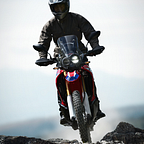Self-Driving Car Engineer Diary — 3
Tue, 3/Jan/2017
Hi. Dived into part 1 of Deep Learning during the last 2 weeks. The course covered a lot of material over 7 lessons, defined with succinct, well commented, executable code … just how I like it! Even then, I found I kept creating Google Sheets of the various calculations to feel really comfortable before moving onto the next concept. Here is an extremely condensed list of the many learning highlights …
- Simple Neural Networks
Simple model with linear transformation and softmax probability of the class scores resulting in a single ‘1-hot’ label.
2. Deep Neural Networks
Minimising cost (loss) aka the network teaching itself by looping through to find the lowest mean-squared-error (MSE) of the classification result by first processing forward through the model, then applying a learning rate (step) to Stochastic Gradient Descent and Backpropagation in a backward pass to see it’s impact on cost given a small change in output from layer 1.
3. Convolutional Neural Networks
Next task : The LeNet model will be the basis for tackling Project 2 : Traffic Sign Classifier. In the meantime, why not have a play with your own neural network. Have fun!
